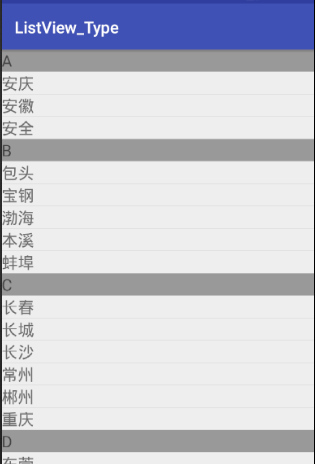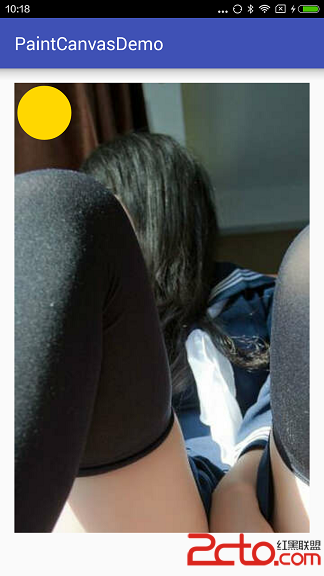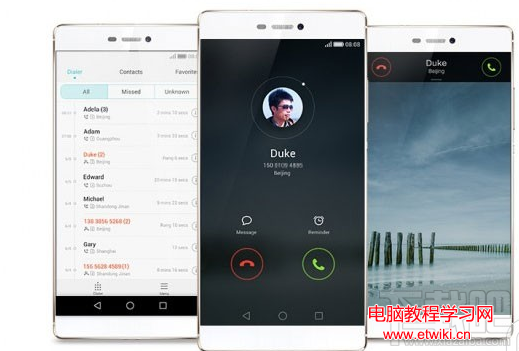前面我們看了key事件的處理流程,相信大家對此已經有了新的認識,這篇文章我打算帶領大家來看看稍微復雜些的touch
事件的處理流程。說它復雜是因為key事件本身就key down,up,long pressed這幾種,而touch事件支持多指觸摸,給人的
感覺好像同時在發生多個touch事件一樣,所以要處理的手指是多個而不是固定的一個,邏輯上當然也就復雜些了。不過本質
上還都是down、up、long pressed,touch的話還有move事件。接下來讓我們直接進入本文的正題。
我們選擇直接從touch事件被分發到view層次結構的根節點DecorView開始說起,代碼如下:
@Override
public boolean dispatchTouchEvent(MotionEvent ev) {
final Callback cb = getCallback(); // 和key事件類似,優先派發給Callback,否則直接交給view層次結構處理
return cb != null && !isDestroyed() && mFeatureId < 0 ? cb.dispatchTouchEvent(ev)
: super.dispatchTouchEvent(ev);
}
在前面介紹key事件的處理流程時我們說過,Callback接口的實現一般是Activity或Dialog,這裡我們看看Activity的實現:
復制代碼
/**
* Called to process touch screen events. You can override this to
* intercept all touch screen events before they are dispatched to the
* window. Be sure to call this implementation for touch screen events
* that should be handled normally.
*
* @param ev The touch screen event.
*
* @return boolean Return true if this event was consumed.
*/
public boolean dispatchTouchEvent(MotionEvent ev) {
if (ev.getAction() == MotionEvent.ACTION_DOWN) {
onUserInteraction(); // 一開始down事件的時候,調用此callback
}
if (getWindow().superDispatchTouchEvent(ev)) { // 交給了此Activity關聯的window處理,實際是派發到view層次結構中
return true; // 如果被window處理掉了(消費了)則返回true,
}
return onTouchEvent(ev); // 否則調用Activity自己的onTouchEvent進行最後的處理
}
復制代碼
緊接著,我們看看交給window處理的邏輯,這裡我們不繞彎了,直接看最終調用到的代碼:
復制代碼
@Override
public boolean superDispatchTouchEvent(MotionEvent event) {
return mDecor.superDispatchTouchEvent(event); // window直接交給了DecorView處理
}
public boolean superDispatchTouchEvent(MotionEvent event) {
return super.dispatchTouchEvent(event); // DecorView直接交給了其super,即ViewGroup處理
}
復制代碼
接下來ViewGroup對touch事件的處理才是重中之重,不過在看容器類對touch事件處理之前,我覺得有必要先來看看單一的View類
對touch事件的處理,畢竟簡單些,而且ViewGroup自身也依賴這些實現,代碼如下:
復制代碼
/**
* Pass the touch screen motion event down to the target view, or this
* view if it is the target.
*
* @param event The motion event to be dispatched.
* @return True if the event was handled by the view, false otherwise.
*/
public boolean dispatchTouchEvent(MotionEvent event) {
if (mInputEventConsistencyVerifier != null) {
mInputEventConsistencyVerifier.onTouchEvent(event, 0);
}
if (onFilterTouchEventForSecurity(event)) { // 一般都成立
//noinspection SimplifiableIfStatement
ListenerInfo li = mListenerInfo;
if (li != null && li.mOnTouchListener != null && (mViewFlags & ENABLED_MASK) == ENABLED
&& li.mOnTouchListener.onTouch(this, event)) { // 先在ENABLED狀態下嘗試調用onTouch方法
return true; // 如果被onTouch處理了,則直接返回true
}
// 從這裡我們可以看出,當你既設置了OnTouchListener又設置了OnClickListener,那麼當前者返回true的時候,
// onTouchEvent沒機會被調用,當然你的OnClickListener也就不會被觸發
if (onTouchEvent(event)) {
return true;
}
}
if (mInputEventConsistencyVerifier != null) {
mInputEventConsistencyVerifier.onUnhandledEvent(event, 0);
}
return false; // 上面的都沒處理,則返回false
}
/**
* Implement this method to handle touch screen motion events.
* <p>
* If this method is used to detect click actions, it is recommended that
* the actions be performed by implementing and calling
* {@link #performClick()}. This will ensure consistent system behavior,
* including:
* <ul>
* <li>obeying click sound preferences
* <li>dispatching OnClickListener calls
* <li>handling {@link AccessibilityNodeInfo#ACTION_CLICK ACTION_CLICK} when
* accessibility features are enabled
* </ul>
*
* @param event The motion event.
* @return True if the event was handled, false otherwise.
*/
public boolean onTouchEvent(MotionEvent event) { // View對touch事件的默認處理邏輯
final int viewFlags = mViewFlags;
if ((viewFlags & ENABLED_MASK) == DISABLED) { // DISABLED的狀態下
if (event.getAction() == MotionEvent.ACTION_UP && (mPrivateFlags & PFLAG_PRESSED) != 0) {
setPressed(false); // 復原,如果之前是PRESSED狀態
}
// A disabled view that is clickable still consumes the touch
// events, it just doesn't respond to them.
return (((viewFlags & CLICKABLE) == CLICKABLE || // CLICKABLE或LONG_CLICKABLE的view標記為對事件處理了,
(viewFlags & LONG_CLICKABLE) == LONG_CLICKABLE)); // 只不過是以do nothing的方式處理了。
}
if (mTouchDelegate != null) {
if (mTouchDelegate.onTouchEvent(event)) { // 如果有TouchDelegate的話,優先交給它處理
return true; // 處理了返回true,否則接著往下走
}
}
if (((viewFlags & CLICKABLE) == CLICKABLE || // View能對touch事件響應的前提要麼是CLICKABLE要麼是LONG_CLICKABLE
(viewFlags & LONG_CLICKABLE) == LONG_CLICKABLE)) {
switch (event.getAction()) {
case MotionEvent.ACTION_UP: // UP事件
// 如果外圍有可以滾動的parent的話,當按下時會設置這個標志位
boolean prepressed = (mPrivateFlags & PFLAG_PREPRESSED) != 0;
if ((mPrivateFlags & PFLAG_PRESSED) != 0 || prepressed) { // 按下了或者預按下了
// take focus if we don't have it already and we should in
// touch mode.
boolean focusTaken = false;
// 這行代碼就是我們上篇博客中說的,設置了FocusableInTouchMode後,View在點擊的時候就會
// 嘗試requestFocus(),並將focusToken設置為true
if (isFocusable() && isFocusableInTouchMode() && !isFocused()) {
focusTaken = requestFocus(); // 能進來這個if,一般都會返回true
}
if (prepressed) {
// The button is being released before we actually
// showed it as pressed. Make it show the pressed
// state now (before scheduling the click) to ensure
// the user sees it.
// 在前面down事件的時候我們延遲顯示view的pressed狀態
setPressed(true); // 知道up事件的時候才顯示pressed狀態
}
if (!mHasPerformedLongPress) { // 如果沒有長按發生的話
// This is a tap, so remove the longpress check
removeLongPressCallback(); // 移除長按callback
// Only perform take click actions if we were in the pressed state
if (!focusTaken) { // 看到沒,focusTaken是false才會進入下面的if語句
// Use a Runnable and post this rather than calling
// performClick directly. This lets other visual state
// of the view update before click actions start.
// 也就是說在touch mode下,不take focus的view第一次點擊的時候才會觸發onClick事件
if (mPerformClick == null) {
mPerformClick = new PerformClick();
}
if (!post(mPerformClick)) { // 如果post失敗了,則直接調用performClick()方法
performClick(); // 這2行代碼會觸發onClickListener
}
}
}
if (mUnsetPressedState == null) {
mUnsetPressedState = new UnsetPressedState(); // unset按下狀態的
}
if (prepressed) {
postDelayed(mUnsetPressedState,
ViewConfiguration.getPressedStateDuration());
} else if (!post(mUnsetPressedState)) {
// If the post failed, unpress right now
mUnsetPressedState.run();
}
removeTapCallback();
}
break;
case MotionEvent.ACTION_DOWN:
mHasPerformedLongPress = false;
if (performButtonActionOnTouchDown(event)) {
break;
}
// Walk up the hierarchy to determine if we're inside a scrolling container.
boolean isInScrollingContainer = isInScrollingContainer();
// For views inside a scrolling container, delay the pressed feedback for
// a short period in case this is a scroll.
if (isInScrollingContainer) { // 如果是在可以滾動的container裡面的話
mPrivateFlags |= PFLAG_PREPRESSED; // 設置pre按下標志位
if (mPendingCheckForTap == null) {
mPendingCheckForTap = new CheckForTap();
} // 延遲pressed feedback
postDelayed(mPendingCheckForTap, ViewConfiguration.getTapTimeout());
} else {
// Not inside a scrolling container, so show the feedback right away
setPressed(true); // 否則直接顯示pressed feedback
checkForLongClick(0); // 並啟動長按檢測
}
break;
case MotionEvent.ACTION_CANCEL: // 針對CANCEL事件的話,恢復各種狀態,移除各種callback
setPressed(false);
removeTapCallback();
removeLongPressCallback();
break;
case MotionEvent.ACTION_MOVE: // MOVE事件
final int x = (int) event.getX();
final int y = (int) event.getY();
// Be lenient about moving outside of buttons
if (!pointInView(x, y, mTouchSlop)) { // 如果移動到view的邊界之外了,
// Outside button
removeTapCallback(); // 則取消Tap callback,這樣當你松手的時候onClick不會被觸發
if ((mPrivateFlags & PFLAG_PRESSED) != 0) { // 當已經是按下狀態的話
// Remove any future long press/tap checks
removeLongPressCallback(); // 移除長按callback
setPressed(false); // 恢復按下狀態
}
}
break;
}
return true; // 最後返回true,表示對touch事件處理過了,消費了
}
return false; // 既不能單擊也不能長按的View,返回false,表示不處理touch事件
}
復制代碼
其中涉及到好多小的方法,都非常簡單,不再一一例出。
在開始介紹ViewGroup對touch事件的處理之前,我們還得先看看ViewGroup的一個內部類TouchTarget,因為它描述的就是被
touch的view和touch的手指相關的信息,代碼如下:
復制代碼
/* Describes a touched view and the ids of the pointers that it has captured.
*
* This code assumes that pointer ids are always in the range 0..31 such that
* it can use a bitfield to track which pointer ids are present.
* As it happens, the lower layers of the input dispatch pipeline also use the
* same trick so the assumption should be safe here...
*/
private static final class TouchTarget {
private static final int MAX_RECYCLED = 32;
private static final Object sRecycleLock = new Object[0];
private static TouchTarget sRecycleBin; // 回收再利用的鏈表頭
private static int sRecycledCount;
public static final int ALL_POINTER_IDS = -1; // all ones
// The touched child view.
public View child;
// The combined bit mask of pointer ids for all pointers captured by the target.
public int pointerIdBits;
// The next target in the target list.
public TouchTarget next;
private TouchTarget() {
}
// 看到這個有沒有很眼熟?是的Message裡也有類似的實現,我們在之前介紹Message的文章裡詳細地分析過
public static TouchTarget obtain(View child, int pointerIdBits) {
final TouchTarget target;
synchronized (sRecycleLock) {
if (sRecycleBin == null) { // 沒有可以回收的目標,則new一個返回
target = new TouchTarget();
} else {
target = sRecycleBin; // 重用當前的sRecycleBin
sRecycleBin = target.next; // 更新sRecycleBin指向下一個
sRecycledCount--; // 重用了一個,可回收的減1
target.next = null; // 切斷next指向
}
}
target.child = child; // 找到合適的target後,賦值
target.pointerIdBits = pointerIdBits;
return target;
}
public void recycle() { // 基本是obtain的反向過程
synchronized (sRecycleLock) {
if (sRecycledCount < MAX_RECYCLED) {
next = sRecycleBin; // next指向舊的可回收的頭
sRecycleBin = this; // update舊的頭指向this,表示它自己現在是可回收的target(第一個)
sRecycledCount += 1; // 多了一個可回收的
} else {
next = null; // 沒有next了
}
child = null; // 清空child字段
}
}
}
復制代碼
理解了TouchTarget,現在是時候直面ViewGroup的dispatchTouchEvent()方法了,代碼如下:
復制代碼
@Override
public boolean dispatchTouchEvent(MotionEvent ev) {
if (mInputEventConsistencyVerifier != null) {
mInputEventConsistencyVerifier.onTouchEvent(ev, 1);
}
boolean handled = false;
if (onFilterTouchEventForSecurity(ev)) { // view沒有被遮罩,一般都成立
final int action = ev.getAction();
final int actionMasked = action & MotionEvent.ACTION_MASK;
// Handle an initial down.
if (actionMasked == MotionEvent.ACTION_DOWN) { // 一堆touch事件(從按下到松手)中的第一個down事件
// Throw away all previous state when starting a new touch gesture.
// The framework may have dropped the up or cancel event for the previous gesture
// due to an app switch, ANR, or some other state change.
cancelAndClearTouchTargets(ev);
resetTouchState(); // 作為新一輪的開始,reset所有相關的狀態
}
// Check for interception.
final boolean intercepted; // 檢查是否要攔截
if (actionMasked == MotionEvent.ACTION_DOWN // down事件
|| mFirstTouchTarget != null) { // 或者之前的某次事件已經經由此ViewGroup派發給children後被處理掉了
final boolean disallowIntercept = (mGroupFlags & FLAG_DISALLOW_INTERCEPT) != 0;
if (!disallowIntercept) { // 只有允許攔截才執行onInterceptTouchEvent方法
intercepted = onInterceptTouchEvent(ev); // 默認返回false,不攔截
ev.setAction(action); // restore action in case it was changed
} else {
intercepted = false; // 不允許攔截的話,直接設為false
}
} else {
// There are no touch targets and this action is not an initial down
// so this view group continues to intercept touches.
// 在這種情況下,actionMasked != ACTION_DOWN && mFirstTouchTarget == null
// 第一次的down事件沒有被此ViewGroup的children處理掉(要麼是它們自己不處理,要麼是ViewGroup從一
// 開始的down事件就開始攔截),則接下來的所有事件
// 也沒它們的份,即不處理down事件的話,那表示你對後面接下來的事件也不感興趣
intercepted = true; // 這種情況下設置ViewGroup攔截接下來的事件
}
// Check for cancelation.
final boolean canceled = resetCancelNextUpFlag(this)
|| actionMasked == MotionEvent.ACTION_CANCEL; // 此touch事件是否取消了
// Update list of touch targets for pointer down, if needed.
// 是否拆分事件,3.0(包括)之後引入的,默認拆分
final boolean split = (mGroupFlags & FLAG_SPLIT_MOTION_EVENTS) != 0;
TouchTarget newTouchTarget = null; // 接下來ViewGroup判斷要將此touch事件交給誰處理
boolean alreadyDispatchedToNewTouchTarget = false;
if (!canceled && !intercepted) { // 沒取消也不攔截,即是個有效的touch事件
if (actionMasked == MotionEvent.ACTION_DOWN // 第一個手指down
|| (split && actionMasked == MotionEvent.ACTION_POINTER_DOWN) // 接下來的手指down
|| actionMasked == MotionEvent.ACTION_HOVER_MOVE) {
final int actionIndex = ev.getActionIndex(); // always 0 for down
final int idBitsToAssign = split ? 1 << ev.getPointerId(actionIndex)
: TouchTarget.ALL_POINTER_IDS;
// Clean up earlier touch targets for this pointer id in case they
// have become out of sync.
removePointersFromTouchTargets(idBitsToAssign);
final int childrenCount = mChildrenCount;
if (newTouchTarget == null && childrenCount != 0) { // 基本都成立
final float x = ev.getX(actionIndex);
final float y = ev.getY(actionIndex);
// Find a child that can receive the event.
// Scan children from front to back.
final View[] children = mChildren;
final boolean customOrder = isChildrenDrawingOrderEnabled();
// 從最後一個向第一個找
for (int i = childrenCount - 1; i >= 0; i--) {
final int childIndex = customOrder ?
getChildDrawingOrder(childrenCount, i) : i;
final View child = children[childIndex];
if (!canViewReceivePointerEvents(child)
|| !isTransformedTouchPointInView(x, y, child, null)) {
continue; // 不滿足這2個條件直接跳過,看下一個child
}
// child view能receive touch事件而且touch坐標也在view邊界內
newTouchTarget = getTouchTarget(child);// 查找child對應的TouchTarget
if (newTouchTarget != null) { // 比如在同一個child上按下了多跟手指
// Child is already receiving touch within its bounds.
// Give it the new pointer in addition to the ones it is handling.
newTouchTarget.pointerIdBits |= idBitsToAssign;
break; // newTouchTarget已經有了,跳出for循環
}
resetCancelNextUpFlag(child);
// 將此事件交給child處理
// 有這種情況,一個手指按在了child1上,另一個手指按在了child2上,以此類推
// 這樣TouchTarget的鏈就形成了
if (dispatchTransformedTouchEvent(ev, false, child, idBitsToAssign)) {
// Child wants to receive touch within its bounds.
mLastTouchDownTime = ev.getDownTime();
mLastTouchDownIndex = childIndex;
mLastTouchDownX = ev.getX();
mLastTouchDownY = ev.getY();
// 如果處理掉了的話,將此child添加到touch鏈的頭部
// 注意這個方法內部會更新 mFirstTouchTarget
newTouchTarget = addTouchTarget(child, idBitsToAssign);
alreadyDispatchedToNewTouchTarget = true; // down或pointer_down事件已經被處理了
break; // 可以退出for循環了。。。
}
}
}
// 本次沒找到newTouchTarget但之前的mFirstTouchTarget已經有了
if (newTouchTarget == null && mFirstTouchTarget != null) {
// Did not find a child to receive the event.
// Assign the pointer to the least recently added target.
newTouchTarget = mFirstTouchTarget;
while (newTouchTarget.next != null) {
newTouchTarget = newTouchTarget.next;
}
// while結束後,newTouchTarget指向了最初的TouchTarget
newTouchTarget.pointerIdBits |= idBitsToAssign;
}
}
}
// 非down事件直接從這裡開始處理,不會走上面的一大堆尋找TouchTarget的邏輯
// Dispatch to touch targets.
if (mFirstTouchTarget == null) {
// 沒有children處理則派發給自己處理
// No touch targets so treat this as an ordinary view.
handled = dispatchTransformedTouchEvent(ev, canceled, null,
TouchTarget.ALL_POINTER_IDS);
} else {
// Dispatch to touch targets, excluding the new touch target if we already
// dispatched to it. Cancel touch targets if necessary.
TouchTarget predecessor = null;
TouchTarget target = mFirstTouchTarget;
while (target != null) { // 遍歷TouchTarget形成的鏈表
final TouchTarget next = target.next;
if (alreadyDispatchedToNewTouchTarget && target == newTouchTarget) {
handled = true; // 已經處理過的不再讓其處理事件
} else {
// 取消child標記
final boolean cancelChild = resetCancelNextUpFlag(target.child)
|| intercepted;
// 如果ViewGroup從半路攔截了touch事件則給touch鏈上的child發送cancel事件
// 如果cancelChild為true的話
if (dispatchTransformedTouchEvent(ev, cancelChild,
target.child, target.pointerIdBits)) {
handled = true; // TouchTarget鏈中任意一個處理了則設置handled為true
}
if (cancelChild) { // 如果是cancelChild的話,則回收此target節點
if (predecessor == null) {
mFirstTouchTarget = next;
} else {
predecessor.next = next; // 相當於從鏈表中刪除一個節點
}
target.recycle(); // 回收它
target = next;
continue;
}
}
predecessor = target; // 訪問下一個節點
target = next;
}
}
// Update list of touch targets for pointer up or cancel, if needed.
if (canceled
|| actionMasked == MotionEvent.ACTION_UP
|| actionMasked == MotionEvent.ACTION_HOVER_MOVE) {
// 取消或up事件時resetTouchState
resetTouchState();
} else if (split && actionMasked == MotionEvent.ACTION_POINTER_UP) {
// 當某個手指抬起時,將其相關的信息移除
final int actionIndex = ev.getActionIndex();
final int idBitsToRemove = 1 << ev.getPointerId(actionIndex);
removePointersFromTouchTargets(idBitsToRemove);
}
}
if (!handled && mInputEventConsistencyVerifier != null) {
mInputEventConsistencyVerifier.onUnhandledEvent(ev, 1);
}
return handled; // 返回處理的結果
}
復制代碼
接下來我們看看關於攔截的方法,代碼如下:
復制代碼
/**
* Implement this method to intercept all touch screen motion events. This
* allows you to watch events as they are dispatched to your children, and
* take ownership of the current gesture at any point.
*
* <p>Using this function takes some care, as it has a fairly complicated
* interaction with {@link View#onTouchEvent(MotionEvent)
* View.onTouchEvent(MotionEvent)}, and using it requires implementing
* that method as well as this one in the correct way. Events will be
* received in the following order:
*
* <ol>
* <li> You will receive the down event here.
* <li> The down event will be handled either by a child of this view
* group, or given to your own onTouchEvent() method to handle; this means
* you should implement onTouchEvent() to return true, so you will
* continue to see the rest of the gesture (instead of looking for
* a parent view to handle it). Also, by returning true from
* onTouchEvent(), you will not receive any following
* events in onInterceptTouchEvent() and all touch processing must
* happen in onTouchEvent() like normal.
* <li> For as long as you return false from this function, each following
* event (up to and including the final up) will be delivered first here
* and then to the target's onTouchEvent().
* <li> If you return true from here, you will not receive any
* following events: the target view will receive the same event but
* with the action {@link MotionEvent#ACTION_CANCEL}, and all further
* events will be delivered to your onTouchEvent() method and no longer
* appear here.
* </ol>
*
* @param ev The motion event being dispatched down the hierarchy.
* @return Return true to steal motion events from the children and have
* them dispatched to this ViewGroup through onTouchEvent().
* The current target will receive an ACTION_CANCEL event, and no further
* messages will be delivered here.
*/
public boolean onInterceptTouchEvent(MotionEvent ev) {
return false; // 其默認直接返回false,表示不攔截
}
復制代碼
系統的ScrollView重載了此方法,以便檢測是滾動的時候直接攔截此事件自己處理而不是一味的下發給其children。最後為了完整性,
我這裡把TouchTarget相關的方法都列一下以便大家參考:
復制代碼
/**
* Resets all touch state in preparation for a new cycle.
*/
private void resetTouchState() {
clearTouchTargets();
resetCancelNextUpFlag(this);
mGroupFlags &= ~FLAG_DISALLOW_INTERCEPT;
}
/**
* Resets the cancel next up flag.
* Returns true if the flag was previously set.
*/
private static boolean resetCancelNextUpFlag(View view) {
if ((view.mPrivateFlags & PFLAG_CANCEL_NEXT_UP_EVENT) != 0) {
view.mPrivateFlags &= ~PFLAG_CANCEL_NEXT_UP_EVENT;
return true;
}
return false;
}
/**
* Clears all touch targets.
*/
private void clearTouchTargets() {
TouchTarget target = mFirstTouchTarget;
if (target != null) {
do {
TouchTarget next = target.next;
target.recycle();
target = next;
} while (target != null);
mFirstTouchTarget = null;
}
}
/**
* Cancels and clears all touch targets.
*/
private void cancelAndClearTouchTargets(MotionEvent event) {
if (mFirstTouchTarget != null) {
boolean syntheticEvent = false;
if (event == null) {
final long now = SystemClock.uptimeMillis();
event = MotionEvent.obtain(now, now,
MotionEvent.ACTION_CANCEL, 0.0f, 0.0f, 0);
event.setSource(InputDevice.SOURCE_TOUCHSCREEN);
syntheticEvent = true;
}
for (TouchTarget target = mFirstTouchTarget; target != null; target = target.next) {
resetCancelNextUpFlag(target.child);
dispatchTransformedTouchEvent(event, true, target.child, target.pointerIdBits);
}
clearTouchTargets();
if (syntheticEvent) {
event.recycle();
}
}
}
/**
* Gets the touch target for specified child view.
* Returns null if not found.
*/
private TouchTarget getTouchTarget(View child) {
for (TouchTarget target = mFirstTouchTarget; target != null; target = target.next) {
if (target.child == child) {
return target;
}
}
return null;
}
/**
* Adds a touch target for specified child to the beginning of the list.
* Assumes the target child is not already present.
*/
private TouchTarget addTouchTarget(View child, int pointerIdBits) {
TouchTarget target = TouchTarget.obtain(child, pointerIdBits);
target.next = mFirstTouchTarget;
mFirstTouchTarget = target;
return target;
}
/**
* Removes the pointer ids from consideration.
*/
private void removePointersFromTouchTargets(int pointerIdBits) {
TouchTarget predecessor = null;
TouchTarget target = mFirstTouchTarget;
while (target != null) {
final TouchTarget next = target.next;
if ((target.pointerIdBits & pointerIdBits) != 0) {
target.pointerIdBits &= ~pointerIdBits;
if (target.pointerIdBits == 0) {
if (predecessor == null) {
mFirstTouchTarget = next;
} else {
predecessor.next = next;
}
target.recycle();
target = next;
continue;
}
}
predecessor = target;
target = next;
}
}
// 類似從鏈表中刪除某個特定的節點
private void cancelTouchTarget(View view) {
TouchTarget predecessor = null;
TouchTarget target = mFirstTouchTarget;
while (target != null) {
final TouchTarget next = target.next;
if (target.child == view) {
if (predecessor == null) {
mFirstTouchTarget = next;
} else {
predecessor.next = next;
}
target.recycle();
final long now = SystemClock.uptimeMillis();
MotionEvent event = MotionEvent.obtain(now, now,
MotionEvent.ACTION_CANCEL, 0.0f, 0.0f, 0);
event.setSource(InputDevice.SOURCE_TOUCHSCREEN);
view.dispatchTouchEvent(event);
event.recycle();
return;
}
predecessor = target;
target = next;
}
}
當遞歸調用一層層向上返回的時候,如果view層次結構沒有處理某個touch事件則最終交給了Activity.onTouchEvent方法,這裡
我們一並看下:
/**
* Called when a touch screen event was not handled by any of the views
* under it. This is most useful to process touch events that happen
* outside of your window bounds, where there is no view to receive it.
*
* @param event The touch screen event being processed.
*
* @return Return true if you have consumed the event, false if you haven't.
* The default implementation always returns false.
*/
public boolean onTouchEvent(MotionEvent event) { // 沒啥需要多說的,好好看方法doc吧
if (mWindow.shouldCloseOnTouch(this, event)) {
finish();
return true;
}
return false;
}
 詳解ListView中多種item的實現方式
詳解ListView中多種item的實現方式
 自定義View時,用到Paint Canvas的一些溫故,講講平時一些效果是怎麼畫的(基礎篇 二,圖像遮蓋,Canvas靜態變化)
自定義View時,用到Paint Canvas的一些溫故,講講平時一些效果是怎麼畫的(基礎篇 二,圖像遮蓋,Canvas靜態變化)
 華為EMUI 5.0新系統怎麼樣 EMUI 5.0新系統什麼時候發布
華為EMUI 5.0新系統怎麼樣 EMUI 5.0新系統什麼時候發布
 微信怎麼鑒別二手機?微信鑒別二手手機方法分享
微信怎麼鑒別二手機?微信鑒別二手手機方法分享